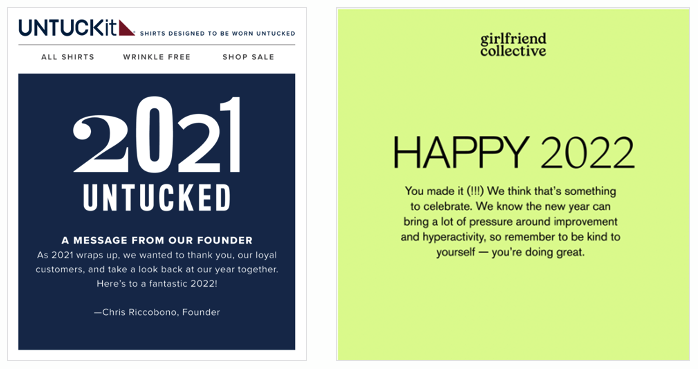As the year came to an end, Q4 2021 saw challenges in the form of labor shortages, the introduction of a new variant, and an unpredictable holiday shopping season.
Despite these headwinds in Q4, we witnessed less of a disruption in consumer behavior thanks to a pandemic-seasoned consumer cushioned by rising household wealth, increased savings, and wage gains. While consumer sentiment is low – spending remains high! Despite macro trends and challenges driving traffic, the NRF saw a 14.1% YOY increase in sales over the November-December 2021 holiday season – amounting to a new record of $886.7B in sales.
Forecasts for the quarter were marked with cautious optimism as an increase in holiday spending was expected due to growth in wages and household wealth, but a surge in COVID-19 infections and consumers motivated to shop early meant holiday spending shifted to earlier in the season.
Extended Holiday Shopping
Predictions were bullish about the holiday season – there is a lot of pent-up spending and we saw consumers eager to shop early. In actuality, the strongest YOY growth came early in the holiday season.
Holiday sales started strong in early November and deteriorated over time. This is a complete reversal to historical holiday trends, likely fueled by consumers shopping early amid inventory and shipping concerns and then eventually pulling back on spending with the rise of COVID variants.
The longer holiday shopping season meant that consumers were able to take advantage of the flexibility it offers. The vast majority (84%) of holiday shoppers reported they shopped in November and 52% completed their holiday purchases by the end of Cyber Week.
Fears over new variant Omicron led experts to predict more wallet share for electronics, toys, apparel, and other items instead of vacations and movie tickets, as consumers would be less inclined to prioritize experience-based spending.
Cyber Week Reflections
As 2021 came to an end, consumers and retailers felt the impact of the Omicron variant, pandemic fatigue, and an extended holiday shopping season.
Consumers planned to spend an average of $998 on items such as gifts, food, decorations and other holiday-related purchases for themselves and their families. Prior to Cyber week, 64% of consumers were already shopping early in case items run out of stock, while others searched online to prepare before heading to stores. Online spending took the biggest hit as a share of overall spending, with non-store retailers reporting a plunge of 8.7% for the month, and furniture and home sales declining 5.5%.
Fewer Promotions, Higher Prices
Promotions over the 2021 holiday season were not as deep and much harder to find at many stores.
Wells Fargo analysts note that Black Friday checks point to the largest decline in promotional activity witnessed in 6+ years. Deutsche Bank found overall promotional activity in November was well below last year’s levels – 86% of retailers they track were less or slightly less promotional compared to 7% who were more or slightly more promotional.
With discounts were down, average order value was up 11% despite consumers purchasing 3% fewer items.
Supply and Labor Shortages Continued
Anticipating high demand, retailers were especially cautious with their approach this season, pushing consumers to shop early for the holidays.
Worker shortages made holiday hiring more difficult than years past while the threat of stockouts gave retailers and consumers even more to worry about. Many parcel delivery providers did improve their on-time delivery in 2021, (on-time performance for UPS was 83% for Cyber Week YOY) but found that fulfillment time was slower this year compared to years past.
What to Expect in 2022
While there is much to learn in the year ahead, the retail industry has continued to display resilience, and consumers have adapted to dealing with pandemic-related disruptions.
Inflation spikes didn’t crush holiday spending, though retailers should keep an eye on potential consequences of macroeconomic headwinds. High household savings, strong job growth, and improved confidence following the latest COVID wave should put consumers back on a high spending track for the year ahead.
Even as variants spread in 2021, overall visits to stores were only 0.8% below 2019 and many chains across categories are drawing more shoppers than before the pandemic. Consumers want the tangible experience of in-person shopping and the convenience of digital channels. Brands should plan to meet shoppers where they are as they use a combination of channels as part of their shopping journey.
Shoppers are operating in a more blended world as the boundaries between physical and digital shopping start to fall away. Marketers will continue to look for ways to build on personalization as customers expect an experience relevant across physical and digital channels.
Q4 Digital Creative
In Q4 2021, digital creative was influenced by concerns over the new variant, inventory issues, and retailers determined to manage customer expectations.
Motivate the Early Shopper
This holiday season, retailers encouraged early shopping — some taking a transparent approach in their messaging while others offered promotional incentives.

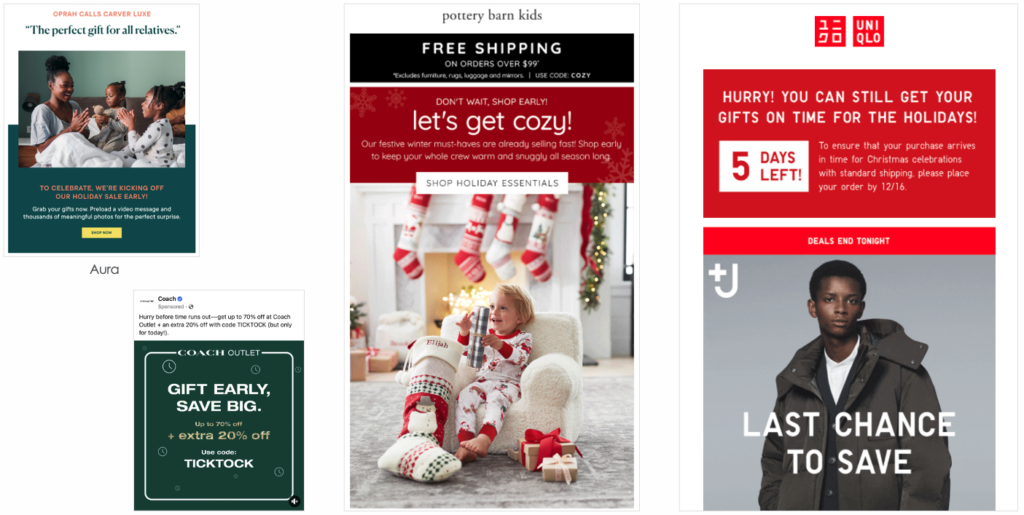
Gift Guides Galore
Personalization always makes a difference! Gift guides continue to be popular throughout Q4, as brands cater to a customer conditioned for convenience.
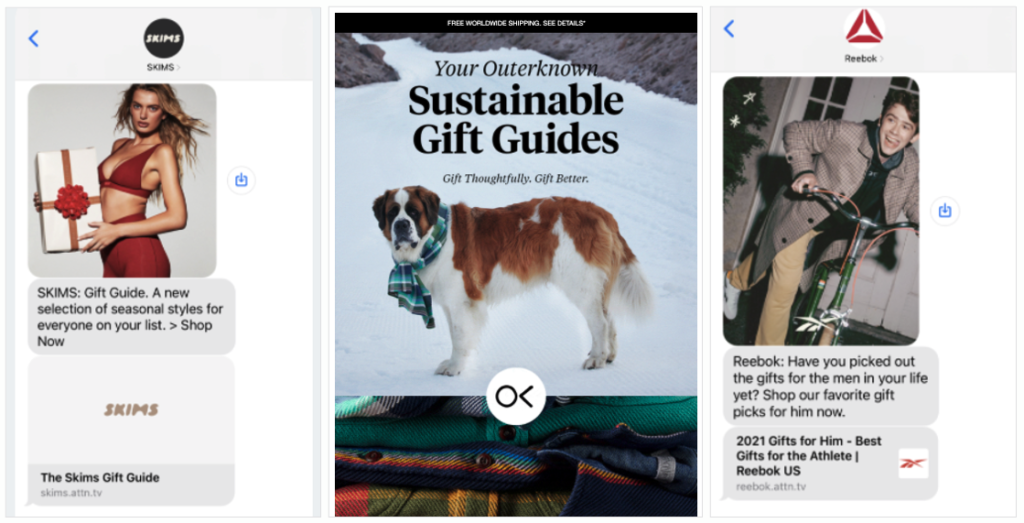
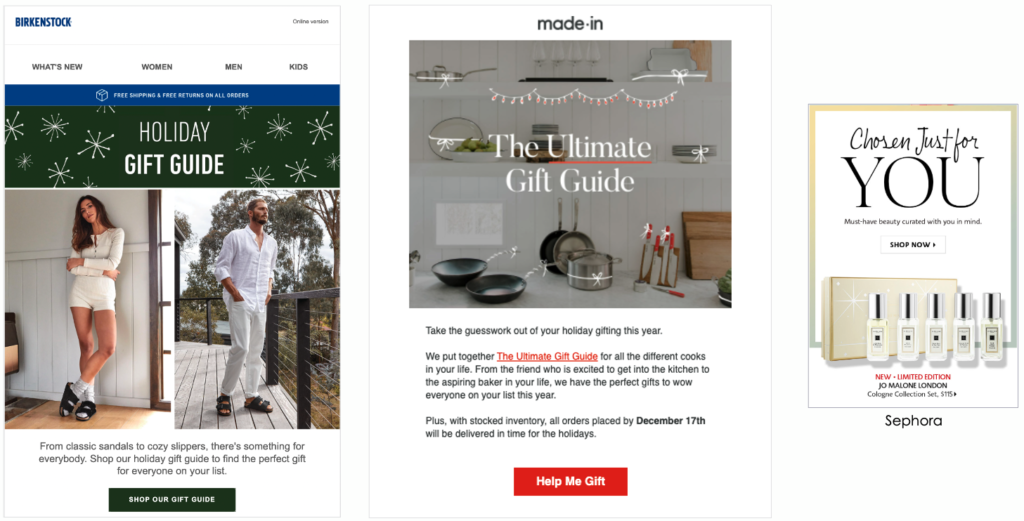
Gift Cards – A Helpful Alternative
Gift cards continue to be popular as they provide a helpful alternative for shoppers concerned with shipping delays and out-of-stock items.
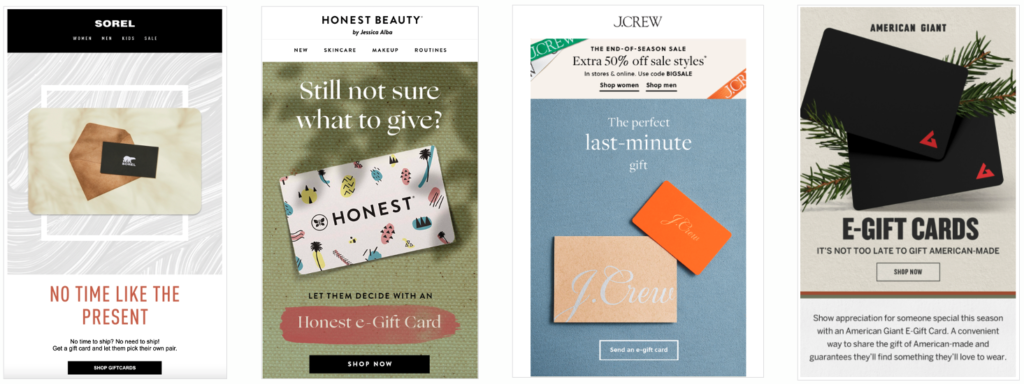
The Labor Issue
In Q4, we came across brands tapping into their customer files to confront labor shortages.
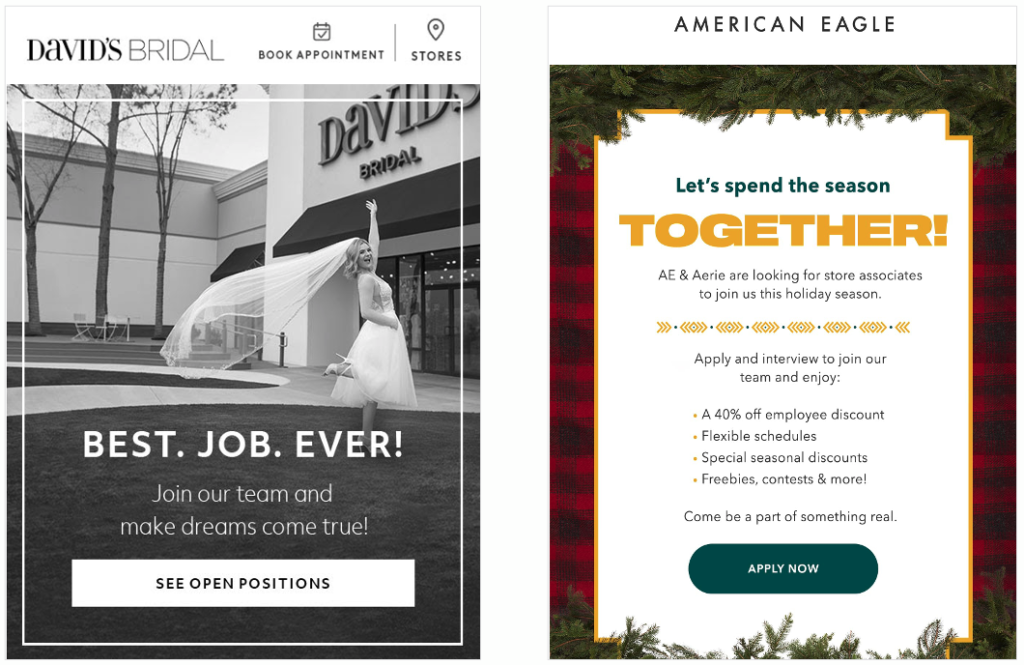
Transparency Is Key
Retailers were transparent about their inventories. Here we see brands using email and SMS to manage customer expectations.
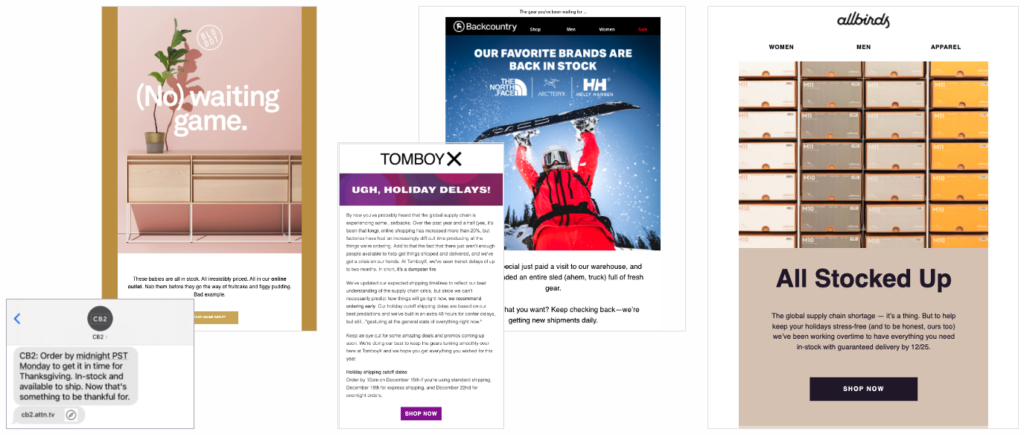
Cyber Five Deals
In 2021, Cyber Five featured a range of promotions as well as brands pushing earlier offerings for the much-anticipated shopping period.
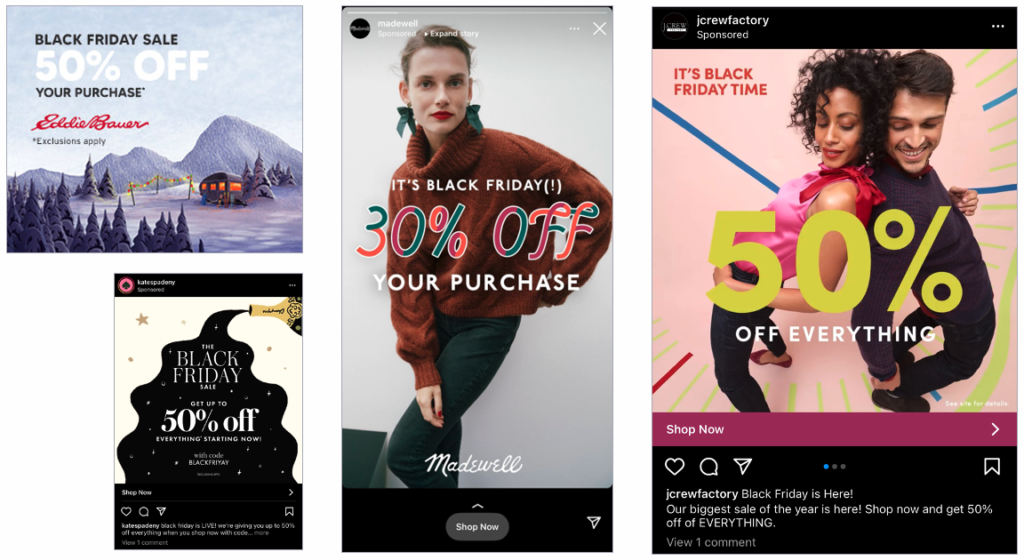

Purchase with Purpose
Brands celebrated Giving Tuesday by sharing important causes and encouraging consumers to participate – from helping those who are food-insecure to protecting the environment.
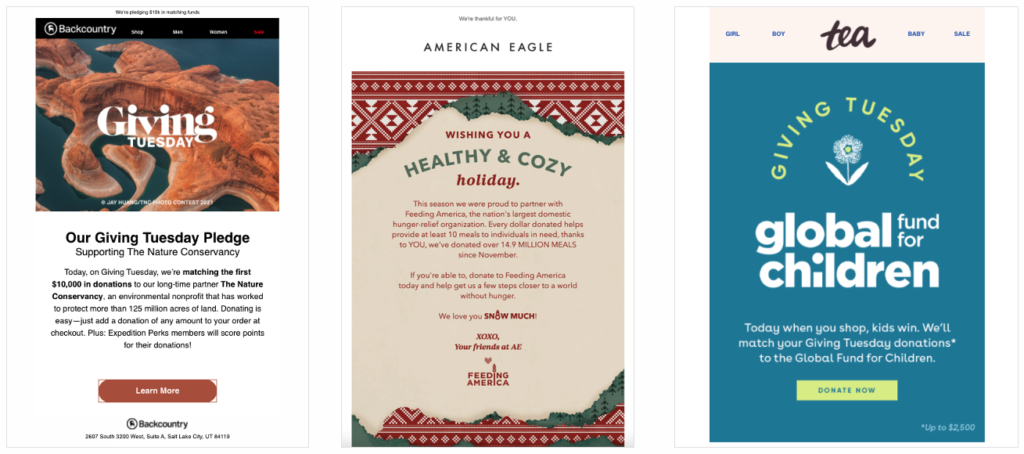
Cheers to the New Year
As 2021 came to an end, retailers conveyed notes of gratitude. Mejuri asked customers to contribute feedback for the year ahead while Girlfriend Collective shared resolutions for 2022.

